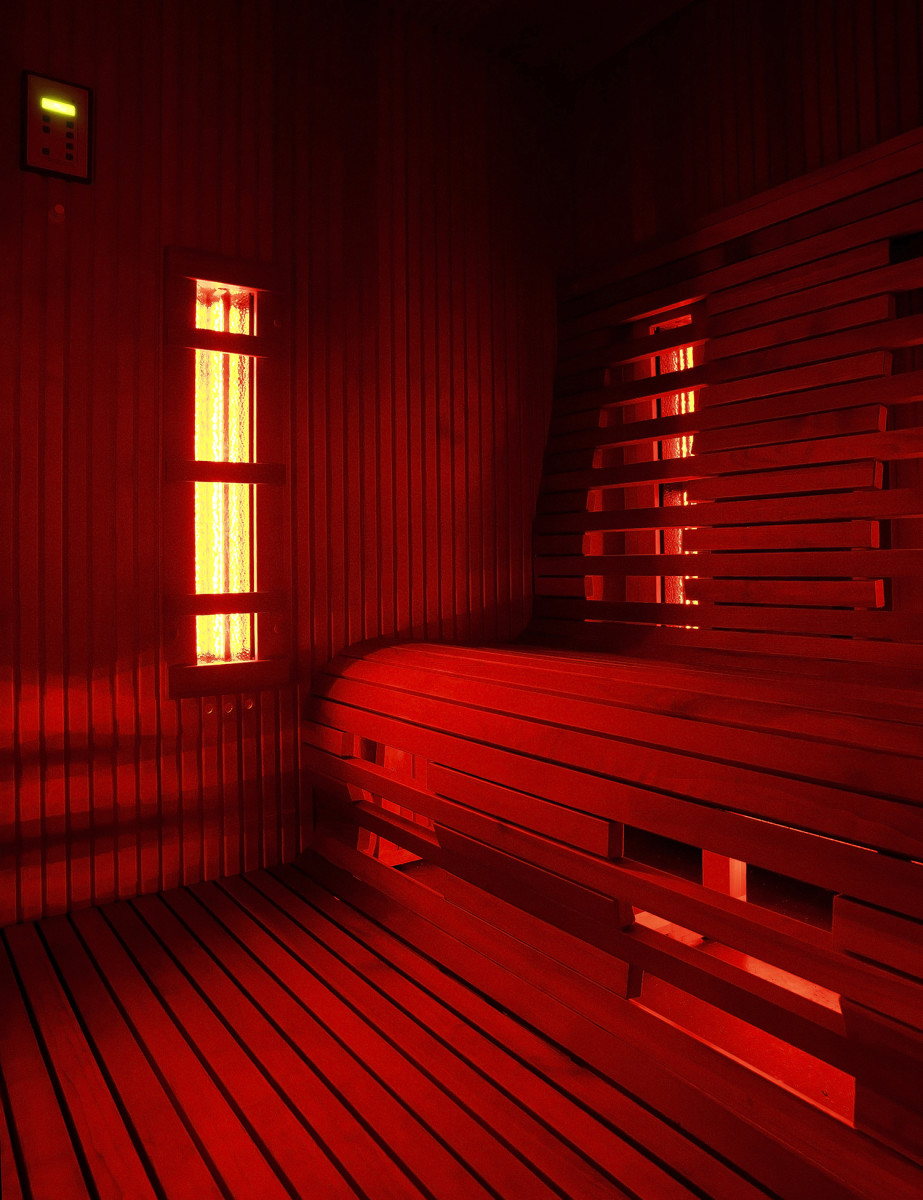Far Infrared Saunas: Explaining the Latest Trend in Athlete Recovery

How athletes rebound from constant wear and tear on their bodies has become nearly as important as how they train. Warm baths and cold tubs are old staples, but far infrared radiation (FIR) saunas are trending among pros and weekend warriors alike, as a way to promote faster recovery.
While a traditional dry sauna simply heats the surrounding air to around 190 degrees, far infrared saunas use infrared lamps to release electromagnetic radiation, which can be absorbed by the body as much as 1.5 inches under the skin. The air temperature inside an infrared sauna, additionally, reaches a much more tolerable 125 degrees. Hospitals have long used similar heating techniques for newborns, and it's not an unnatural occurrence.

"For most of the history of mankind, folks have gathered around fires at night, absorbing FIR while socializing," says Michael Hamblin, associate professor of dermatology at Harvard Medical School. "It is only in recent times with the advent of central heating that nobody is regularly exposed to FIR anymore."
To understand how FIR works, let's go back to middle-school science class: Only a small part of the electromagnetic spectrum is made up of visible light; the rest goes unseen to the naked eye. On the spectrum, between visible light and microwaves, infrared radiation has many well-known applications, from night vision to heating. Without going into advanced cellular biochemistry, it can be explained like this: FIR (closer to microwaves than to visible light) will increase the vibration of water molecules inside cells, in effect raising the temperature in microscopic regions not by heat but by electromagnetic energy. One proven effect is increased blood flow in deep tissue, which is the main benefit to athlete recovery. It's also believed, though it has not been not definitively proved, that the energy can perturb the structure of proteins to the point at which physiological changes on a cellular level could take place.

Wondering how it feels? At Manhattan Physio Group, a physical therapy and wellness center in New York City, I spent 30 minutes inside a small, closet-sized sauna made by manufacturer Sunlighten. Coupled with acoustic mediation therapy (soothing music matched with vibrations) and more than a dozen choices of colored lights for different moods, the sauna’s gentle, 122-degree warmth relaxed my mind and loosened up my muscles. The aftereffect was similar to the high after a yoga class, minus the advanced poses and inversions.
Far infrared technology isn't confined to saunas and lamps. The science may be coming to your closet. You’ve probably heard of far infrared thanks to Tom Brady’s recovery sleepwear line with Under Armour. The pajamas are made of what is called bio-ceramic fabric—a textile that has heat-absorbing ceramic materials woven into it. There are also bedsheets made of similar fabric on the market. The idea is that the fabric will absorb the body heat and re-emit the energy as far infrared radiation back into your skin, creating a kind of mirror effect of energy. For true benefits, a bio-ceramic garment should fit snugly to the skin and be worn for hours at a time.
The academic research on FIR's application for athletes and in sports performance is still very limited. But a 2015 study from the Journal of Athletic Enhancement, which sought to test the effectiveness of far infrared therapy with a group of 10 male athletes from track and field, gymnastics and baseball, found that the use of FIR heat for 40 minutes improves muscle recovery after intense training as compared to passive recovery methods.
Sweating it out in a far infrared sauna may not be an indisputable method, but unwinding in a soothing, stress-busting environment is definitely a recovery routine I can get behind.
